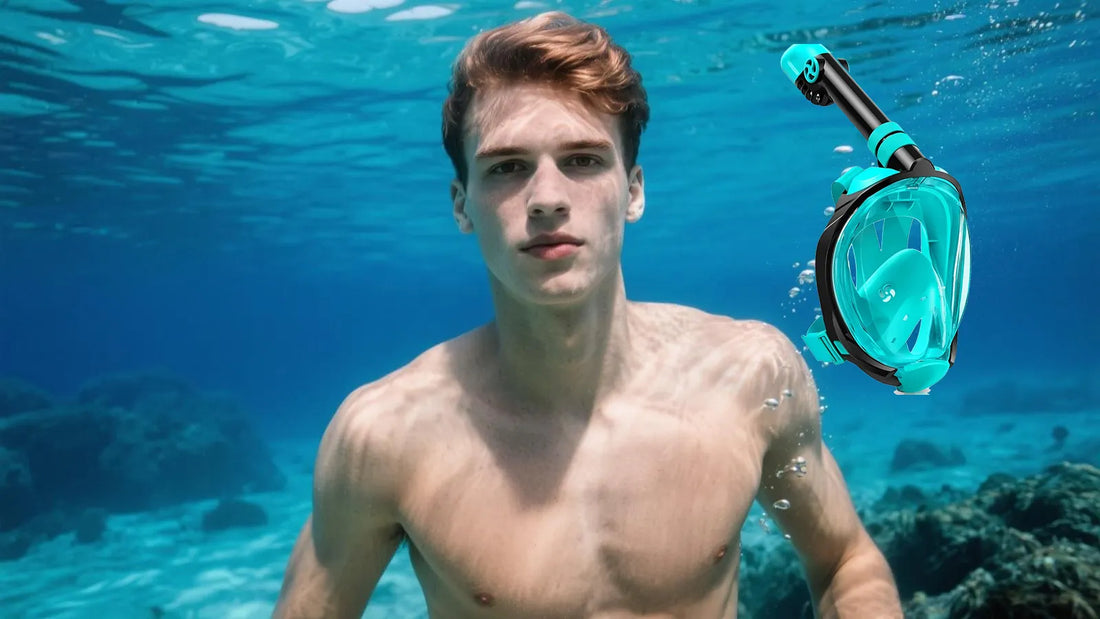Choosing the right diving mask is a critical decision for any diver, whether you're a beginner or a seasoned professional. A well-fitted mask not only enhances your underwater experience but also ensures safety and comfort. With so many options available, it can be overwhelming to make the right choice. This guide will walk you through the key factors to consider when selecting a diving mask, helping you make an informed decision.
Understanding the Importance of a Good Diving Mask
A diving mask is more than just a piece of equipment; it's your window to the underwater world. It allows you to see clearly, protects your eyes from saltwater, and helps equalize pressure as you descend. A poorly chosen mask can lead to discomfort, leaks, and even accidents. Therefore, investing time in selecting the right mask is crucial.
Key Factors to Consider When Choosing a Diving Mask
Fit and Comfort
The fit of your diving mask is paramount. A mask that doesn't fit well can cause discomfort, leak, or even fall off during a dive. To check the fit, place the mask on your face without using the strap. Inhale gently through your nose; the mask should stay in place without any gaps. Ensure that the skirt (the part that seals against your face) is comfortable and doesn't press too hard on your skin.
Lens Type
Diving masks come with different types of lenses, including single, double, and multi-lens options. Single-lens masks offer a wide field of view, while double-lens masks provide better peripheral vision. Multi-lens masks often come with additional features like prescription lenses or tinted lenses for specific conditions. Choose a lens type that suits your diving needs and preferences.
Mask Volume
Mask volume refers to the amount of air space inside the mask. Low-volume masks sit closer to your face, reducing drag and making it easier to equalize pressure. High-volume masks offer more air space, which can be beneficial for those who wear glasses or need more room for their nose. Consider your diving style and comfort when choosing the mask volume.
Skirt Material
The skirt material affects the mask's comfort and durability. Silicone skirts are the most common, offering a good balance of comfort and longevity. Some masks come with hypoallergenic silicone for those with sensitive skin. Other materials, like rubber, are less common but may be more affordable. Choose a skirt material that feels comfortable against your skin.
Mask Strap
The mask strap plays a crucial role in keeping the mask securely in place. Look for a strap that is adjustable and easy to tighten or loosen. Some masks come with quick-release buckles, making it easier to adjust the strap underwater. Ensure that the strap is comfortable and doesn't cause any pressure points on your head.
Field of View
The field of view is another important factor to consider. A wider field of view allows you to see more of your surroundings, enhancing your diving experience. However, a wider field of view may come at the cost of increased mask volume. Balance your need for a wide field of view with the mask's overall fit and comfort.
Mask Color
While mask color may seem like a purely aesthetic choice, it can also affect your diving experience. Darker colors reduce glare and are ideal for diving in bright conditions. Clear or light-colored skirts allow more light into the mask, which can be beneficial in low-light conditions. Choose a color that suits your diving environment and personal preferences.
Price and Budget
Diving masks come in a wide range of prices, from budget-friendly options to high-end models. While it's tempting to go for the cheapest option, remember that a good diving mask is an investment in your safety and comfort. Set a budget that allows you to purchase a quality mask without compromising on essential features.
Testing and Trying On Masks
Before making a purchase, it's essential to try on several masks to find the one that fits you best. Visit a dive shop where you can try on different models and get professional advice. Pay attention to how the mask feels on your face, the ease of equalizing pressure, and the overall comfort. Don't rush the process; take your time to find the perfect mask.
Maintenance and Care
Once you've chosen your diving mask, proper maintenance is key to ensuring its longevity. Rinse your mask with fresh water after each dive to remove salt and debris. Store it in a cool, dry place away from direct sunlight. Avoid using harsh chemicals or abrasive materials to clean the mask, as they can damage the skirt and lenses.
Choosing the right diving mask is a crucial step in ensuring a safe and enjoyable diving experience. By considering factors like fit, lens type, mask volume, and skirt material, you can find a mask that meets your needs and preferences. Remember to try on several masks before making a decision and invest in a quality mask that will last for many dives to come. With the right mask, you'll be ready to explore the underwater world with confidence and clarity.

